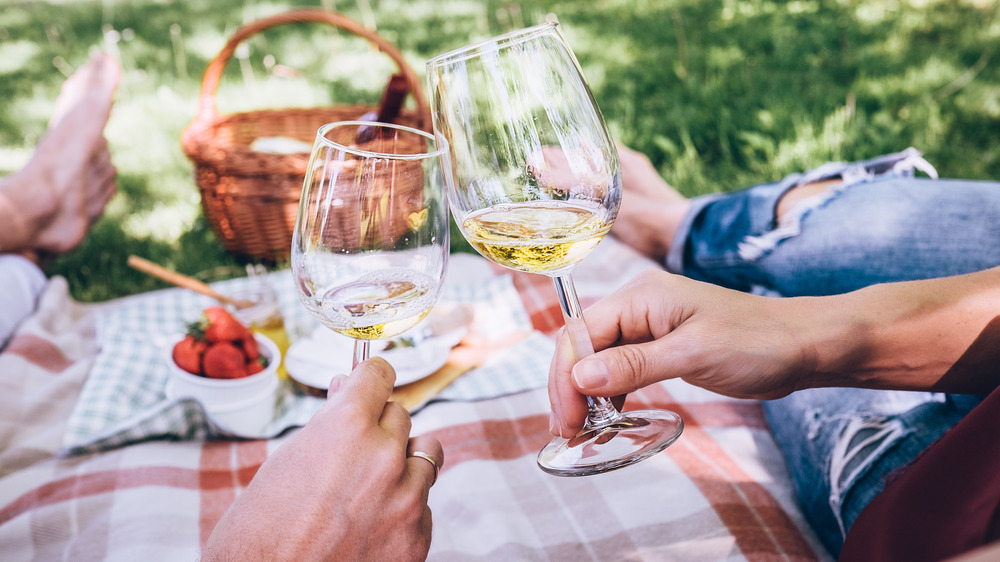What Is Vinho Verde And When Should You Drink It?
Crisp, effervescent and lower in alcohol, Vinho Verde is the ultimate summer wine. But what is it really?
Vinho verde translates to green wine, but Wine Enthusiast notes that origin of the name is a common misconception. While many believe the name comes from its status as wine that is drank young, or when it's still "green;" the name derives primarily from the area in northwestern Portugal where Vinho Verde is produced, as it is a vinicultural region of lush greenery with its own microclimate. Farmers in the area use a fascinating method of growing, notes Wine Searcher, as they not only grow grapes on small plots of land, but also grow them vertically, climbing on whatever is handy, including on pergolas and telephone poles.
Vinho Verde also isn't one particular type of grape, reports VinePair, but rather is generally a blend of multiple Portuguese grapes. And while Americans are often most familiar with the white effervescent Vinho Verde, there is also a red version that is more commonly popular with locals, as well as rosés and non-carbonated whites.
However, the wine is traditionally consumed when it's still relatively unaged, which is the reason for its lower alcohol content. When wines are drank before they have long to age, as with Vinho Verde, which is usually released within a few months of harvest (via Honest Cooking), the alcohol by volume percentage is decreased. According to WineMag, most bottles of Vinho Verde average around 10 to 12 percent alcohol by volume (ABV), lower than the average of 11 to 13 percent for most wines (via Real Simple).
The perfect wine for warm summer days.
The crisp acidic bite and minerality of Vinho Verdes are extremely refreshing on hot days, states Wine Folly. The wine is also particularly known for its effervescence, a bubbly side effect of carbon dioxide trapped during the fermentation process (via VinePair), though Wine Folly notes in modern times most carbon dioxide is artificially added. Also, VinePair continues, the high level of acidity in the wine makes it a great pairing for many different foods, particularly seafood.
Because of its low alcohol content, it has less of the burn that higher-alcohol wines produce (via Real Simple), making it a perfect easy sipper for afternoon day drinking in the sun. And it's also a cheaper bottle of wine to buy, so it makes a budget-friendly option for summer gatherings, reports Fresh Mag, with most decent bottles averaging under $12 (via Camille Styles).
However, Vinho Verde's general perception as a young, relatively unaged wine may be changing. According to CataVino, there has been a push in recent years towards producing single-varietal bottles that are aged for longer. This not only bumps the alcohol percentage up closer to other white wines, as well as increasing the price. But the aging also adds to the complexity and concentration of the flavors, creating a variation wine that The Wall Street Journal has coined a "Super Verde."

